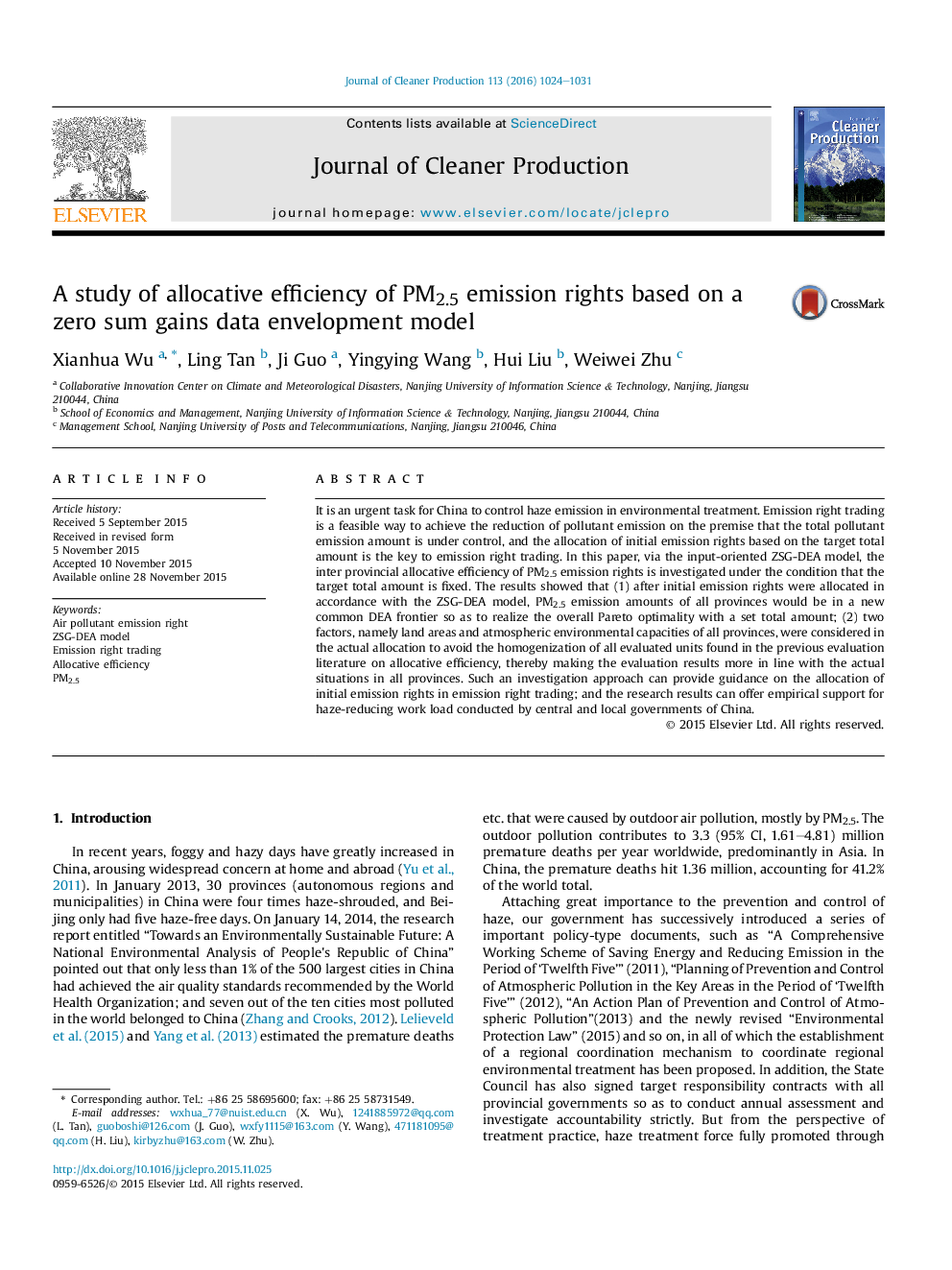| Article ID | Journal | Published Year | Pages | File Type |
|---|---|---|---|---|
| 8103082 | Journal of Cleaner Production | 2016 | 8 Pages |
Abstract
It is an urgent task for China to control haze emission in environmental treatment. Emission right trading is a feasible way to achieve the reduction of pollutant emission on the premise that the total pollutant emission amount is under control, and the allocation of initial emission rights based on the target total amount is the key to emission right trading. In this paper, via the input-oriented ZSG-DEA model, the inter provincial allocative efficiency of PM2.5 emission rights is investigated under the condition that the target total amount is fixed. The results showed that (1) after initial emission rights were allocated in accordance with the ZSG-DEA model, PM2.5 emission amounts of all provinces would be in a new common DEA frontier so as to realize the overall Pareto optimality with a set total amount; (2) two factors, namely land areas and atmospheric environmental capacities of all provinces, were considered in the actual allocation to avoid the homogenization of all evaluated units found in the previous evaluation literature on allocative efficiency, thereby making the evaluation results more in line with the actual situations in all provinces. Such an investigation approach can provide guidance on the allocation of initial emission rights in emission right trading; and the research results can offer empirical support for haze-reducing work load conducted by central and local governments of China.
Keywords
Related Topics
Physical Sciences and Engineering
Energy
Renewable Energy, Sustainability and the Environment
Authors
Xianhua Wu, Ling Tan, Ji Guo, Yingying Wang, Hui Liu, Weiwei Zhu,
